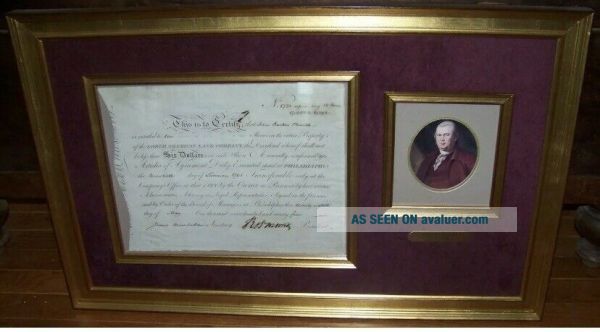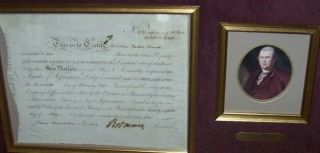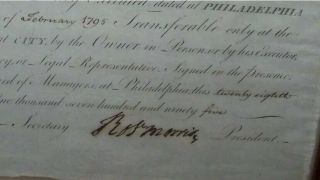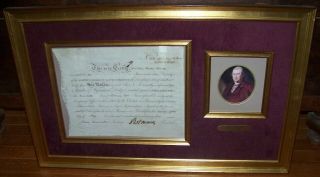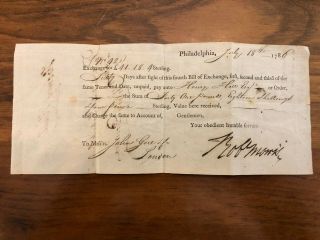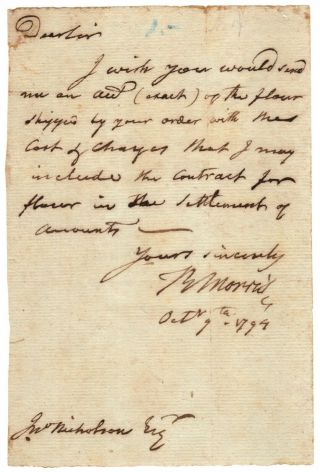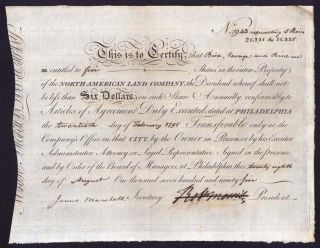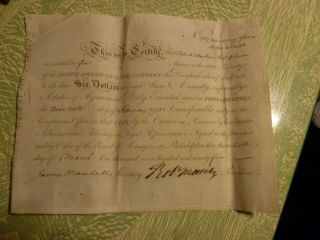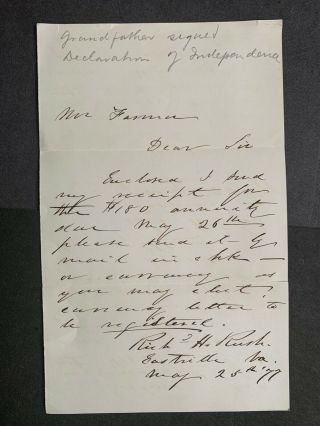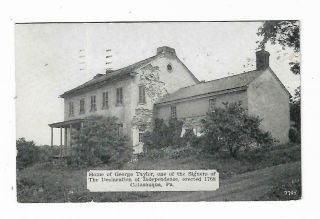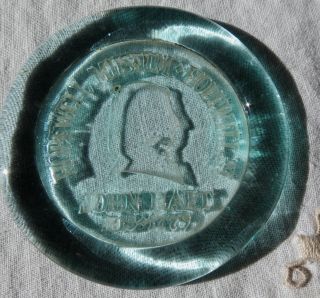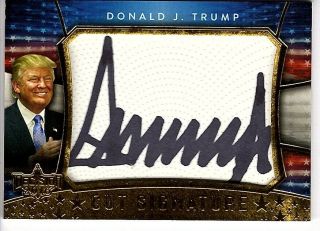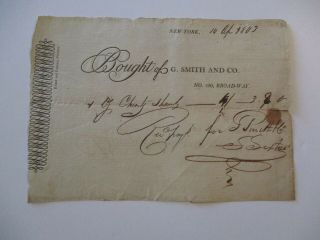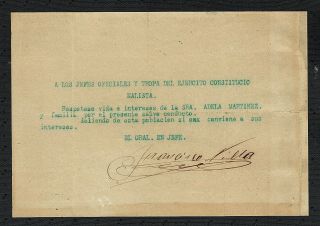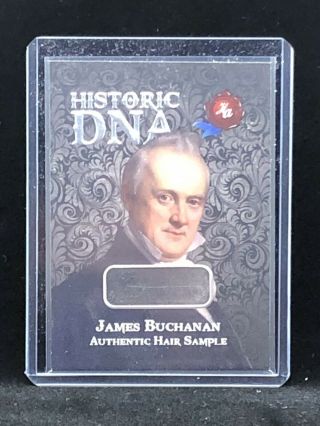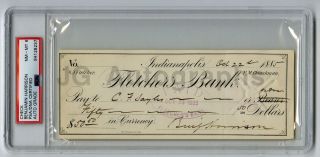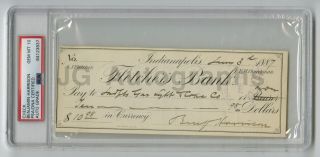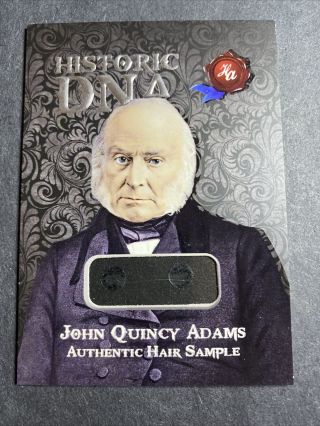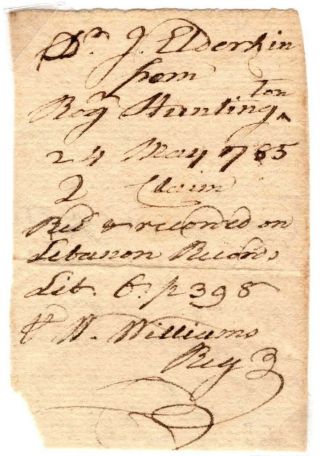1795 ROBERT MORRIS AUTOGRAPH DOCUMENT SIGNER DECLARATION INDEPENDENCE HAMILTON
Item History & Price
| Reference Number: Avaluer:26805771 |
Stock certificate in pristine condition signed by Robert Morris . Document has strong connection to Alexander Hamilton avd Aaron Burr. Certificate was issued to John Barker Church who was Hamilton’s Brother in law and supplied the pistols used on the Durl with Burr. Church also had his own Duel with Burr . See Bio of John Barker Church below Expertly framed (Museum Q...uality) . Pristine document signed by a founding father made out to John Barker Church who played a pivotal role in the Hamilton Burr Duel. One of a kind .
Church was set up in business in London by his mother's brother, a wealthy uncle named John Barker who was a director of the London Assurance Company. It was reported that speculation on the stock exchange and gambling were responsible for his bankruptcy in August 1774.[4]
To escape his creditors he went to America, where he became one of three commissioners appointed by the Continental Congress in July 1776 to audit the accounts of the army in the northern department.[3] There he operated under a nom de guerre as John Carter.[1] He resigned his commission in September 1777, [5] and moved to Boston, Massachusetts. In Boston, he began a variety of businesses, including banking and shipping, and speculated in currency and land. In 1780, along with his business partner, Col. Jeremiah Wadsworth of Hartford, Connecticut, he secured a contract for provisioning the French forces in America, becoming Commissary General. Two years later, they were contracted as sole suppliers to the American army as well, and ended up making a fortune.[3]
Return to England EditAfter the war from 1783 until 1785, Church and his family lived in Paris while he performed his duties as a U.S. envoy to the French government. After briefly returning to America in 1785, Church and his family left for England the same year. In 1788, the Churches bought the Verney property at Wendover so that he could run for Parliament, which he did in 1790, when he was elected a Member of Parliament for Wendover.[6] Prior to his election, he was involved with the Marquis de la Luzerne, the French ambassador in some unsuccessful stock speculation during the Nootka Crisis, [3] a dispute between Great Britain and Spain.[7]
Verney property at WendoverMember of Parliament EditIn December 1790, during his time in Parliament, he voted to approve Prime Minister William Pitt's plan to pay off the debts incurred in rearmament, after having previously been against the government on the Spanish convention. After his vote, he suggested the government should investigate the great amount of money held by trustees of public lands, himself included, not being utilized rather than interfere with unpaid Bank dividends. The Prime Minister thanked him for highlighting the issue. In 1791, William Curtis raised the issue again with a motion for inquiry into the trustees of Ramsgate harbour over their possession of funds. Church was appointed to the select committee as he supported the idea.[3]
In 1791, he voted in favor of the unsuccessful attempt to repeal the Test Act in Scotland. Also in 1791 and again in 1792, he voted with the opposition in the Oczakov debates concerning the Russian occupation of the Turkish port of Ochakiv on the Black Sea.[8] In 1793, he joined the Friends of the People and voted for Grey's motion for inquiry into parliamentary reform, which did not achieve success until 1832. In December 1792, he voted against his fellow Whig, and party leader, Charles Fox's Libel amendment, but opposed the French war. Thereafter, Church regularly voted with the Foxite minority for the rest of his parliamentary career.[3]
In 1795, Church was described part of "a party of English Jacobins" who if acted upon their statements, would be "compromised to the extreme, " by Gouverneur Morris, the former American minister to France. In 1794, he tried with Fox, to stall discussions of an emigration bill in the House.[9] In 1795, Church defended the proceedings at the Middlesex County meeting that was called to petition against the proposed legislation that he deemed repressive. Church was known for his hospitality of French émigrés after the Reign of Terror, paying for Talleyrand's journey and tour of America, and being involved in an attempt to free the Marquis de Lafayette from prison. By 1796, he sold his property at Wendover to the Right Hon. Robert, Lord Carrington, [6] and retired from the House of Commons.[3]
Return to the United States Edit
Wood engraving from a portrait of Philip Schuyler Church, son of John and Angelica ChurchThe Church family returned to America for a visit in 1797, and then returned permanently in 1799 to New York, where Church became a founding director of the Manhattan Company[10] and a director of the Bank of North America.[11]
In May 1796, Church accepted a mortgage on 100, 000 acres (40, 000 ha) of land, a portion of the Phelps and Gorham Purchase in present-day Allegany County and Genesee County, New York, against a debt owed to him by his friend Robert Morris.[12][13] After Morris failed to pay the mortgage, Church foreclosed, and his son Philip Schuyler Church acquired the land in May 1800.[12] To take possession of the land, Philip Church traveled to the area, near the Pennsylvania border, with his surveyor Moses Van Campen.[14] Philip Church selected specific acreage along the Genesee River for a planned village, which he laid out to be reminiscent of Paris, including a village park in the center of town, enclosed by a circular road with streets radiating from it to form a star, and five churches situated around the circle. Philip settled there in a log cabin, and built a house when he married in 1805.[15] He named the village Angelica, New York, after his mother.[15]
John and Angelica Church befriended many French upper-class refugees from the French Revolution, helping them settle in Allegany County[citation needed] and elsewhere throughout the United States. In 1806, the Churches began construction on a thirty-room mansion near the village of Angelica, called Belvidere, which still stands as a privately owned home on the banks of the Genesee in Belmont, New York.[16] Although they had intended to make it their summer home, it instead became the residence of their son Philip and his wife when it was partially completed in 1810.[16]
In 1800, Church was admitted as an honorary member of the New York Society of the Cincinnati.[17]
Burr–Hamilton duelling pistols Edit
Church was an experienced duellist, and owned the Wogdon pistols used in the 1804 Burr–Hamilton duel. The weapons had already been used in an 1801 duel, in which Hamilton's son Philip was killed.[citation needed] Following the duel, the pistols were returned to Church, and reposed at his Belvidere estate until the late 19th century.[18]
Later legend claimed that these pistols were the same ones used in a 1799 duel between Church and Burr, in which neither man was injured.[19] This makes sense according to the accepted rules of the 'code duello', in which the challenged (in this case, Church) had the right to choose the weapons.[20] However, the same rule was apparently ignored in the 1801 duel, where Philip Hamilton was the challenger and also supplied the weapons borrowed from his uncle. Also, Aaron Burr claimed in his memoir that he owned the pistols used in his duel with Church.[21] Hamilton biographer Ron Chernow accepts Burr's version of the story.[22]



